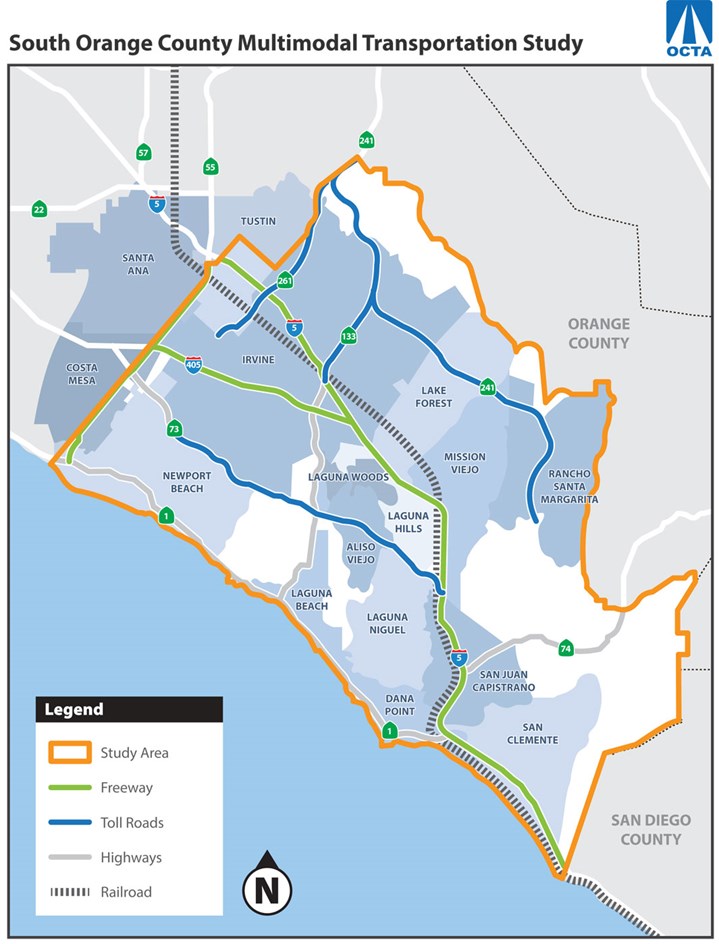South Orange County Multimodal Transportation Study
Orange County Transportation Authority conducted a strategic transportation study that considered transportation needs of residents, commuters, and visitors to the area.
PROJECT CONTACT
Overview
Over the next 25 years, the population in south Orange County is anticipated to grow by 16 percent (about 170,000 residents), and employment is expected to grow by 18 percent (about 130,000 jobs). This growth will result in more people traveling throughout south Orange County and more time lost in traffic if we don’t plan ahead. Through collaboration with local stakeholders, the South Orange County Multimodal Transportation Study (SOCMTS) identified a broad range of improvement recommendations for all modes of transportation, including streets, transit, freeways, and bikeways. The study addressed south Orange County’s mobility needs beyond the year 2045. The final report was completed in 2022.Study Objectives
- Work collaboratively with stakeholders
- Leverage all modes of transportation
- Address long-term mobility needs
- Develop consensus on a set of transportation improvements across all modes
Study Area
The Study area covers about 40 percent of the County from State Route 55 to the San Diego County line and from the coast to the foothills.
